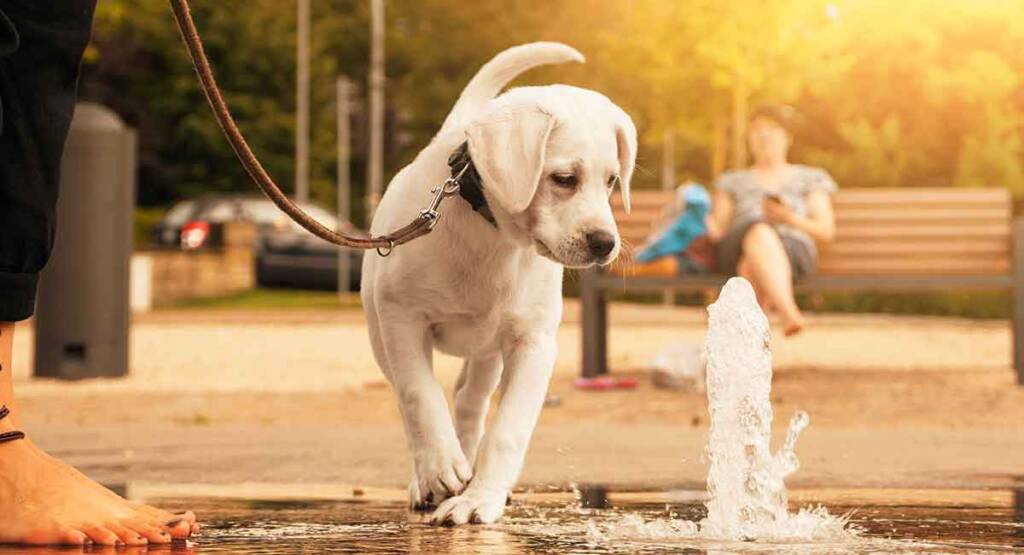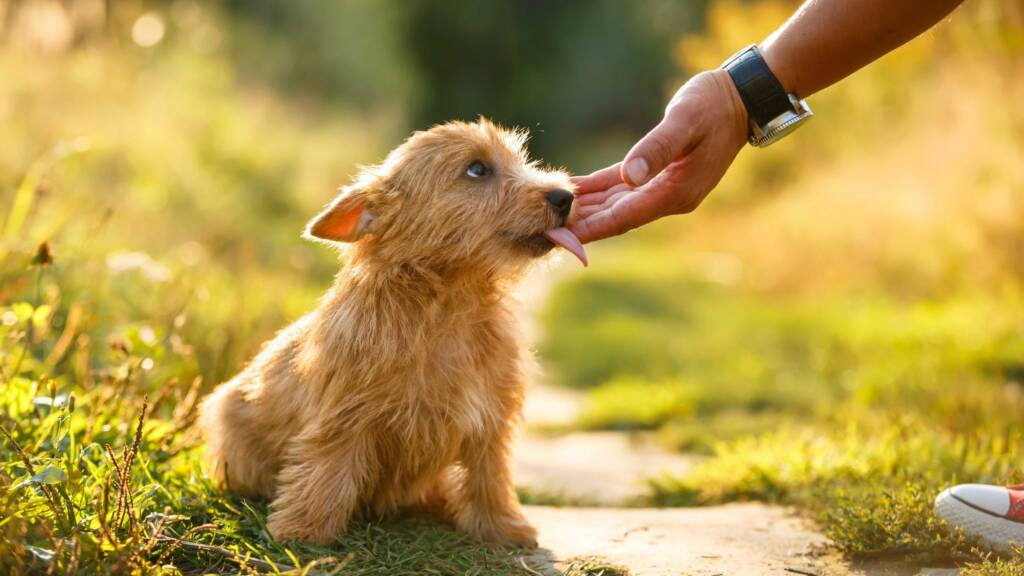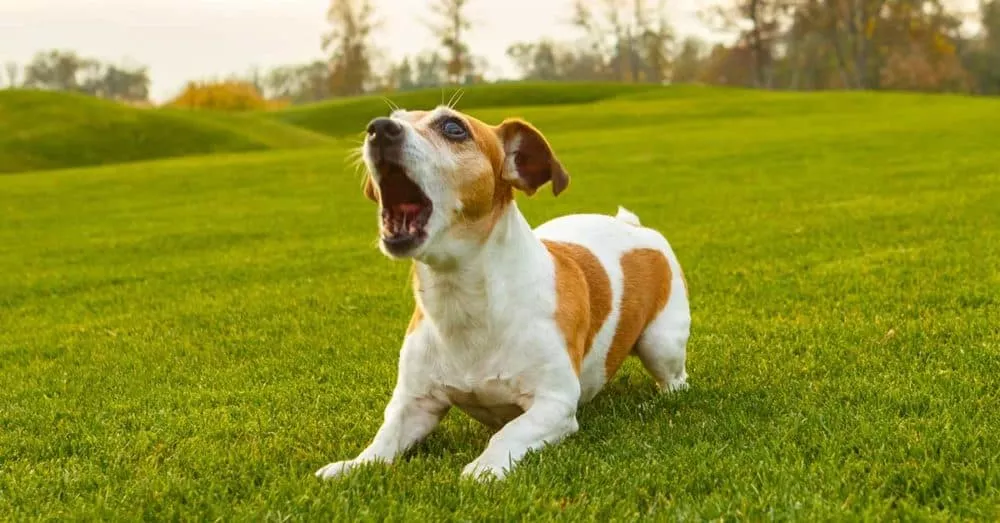Train Your Dog to Sit and Stay: Dogs begin to exhibit the same temperament as their masters more often than not. Often, a happy human will rub off his cheerfulness on his dog, while a suspicious or cranky person will also have a dog who is mistrustful and grumpy.
The reason for this is that dogs learn from their masters. While certain traits are common to dogs of certain breeds, each pet has a unique personality that depends on its training. Dog owners are taught to teach their dogs how to sit and stay on command right from the beginning. Here are a few tips to teach your dog to do so.
Choosing a practice area
If you are training a pup, keep in mind that you should pick a place that is comfortable for your pet. Dogs with short hair may not like sitting on a cold floor and may get uncomfortable after a while, whereas dogs originating from cold climates, such as Siberians, might enjoy it.
There is no doubt that dogs like being outdoors and would benefit from a good deal of exercise anyway. It is a good idea to take them to the front lawn or the nearby park when you are training them.
Like humans, dogs learn better through play, and what is more playful than a nice, lush patch of grass? Indoors or outdoors, never ask your dog to stay on a wet or too hot or too cold surface.
Don’t start too big
Your dog should be happy and relaxed at the time you choose. Puppies in particular need to be relaxed and happy. They should start small. You should wait for a half minute or so before giving your dog a treat after he has been seated instead of handing it over immediately.
By doing so, your dog will learn to wait for treats. You should adjust the intervals according to your dog’s temperament if it is extremely active and bouncy. Consider working with two treats at a time instead of one, where you hold off for a few minutes between each one.
Establish a release schedule
The whole point of training your dog to sit is that it will stay put until you tell it to move. You must choose a word that will cue your dog to move.
When you talk to your pet, avoid using words that you might end up using frequently such as ‘Okay’ or ‘Yes’. Once he hears the word frequently, the dog may start to move away. Pick a gesture or word that will serve as a signal to it to let it know it is fine to move.
This association between a word and getting up can only be established if it is consistently practiced over time. When you want your dog to stay put and when it should be allowed to move, it helps to both use words and gestures to indicate that.
Take it one step at a time
Dogs have a difficult time staying put at a spot if they have to stay for a long time. Make sure your pet isn’t impatient by gradually increasing the duration over time. Turning away from your dog, especially in the beginning phases, will likely result in it walking away or trying to follow you.
Instead, take a step backward and increase the duration of time your dog remains seated. The length of the stay may need to be shortened a little if you continue to take steps backward. You should alternate between distance and time so that you are not too hard on your dog who is still learning.
Provide rewards
If you offer your dog a treat as a reward or as a temptation, place the treat on the forepaw. Don’t try to offer from high up and slowly, otherwise, your dog will spot it and become impatient and eager.
He may begin to move towards it or even try to reach for it. By offering the treat quickly and preferably in front of their feet, your pet will anticipate being rewarded for sitting still. Your dog will therefore sit in anticipation of the treat and not move towards it, thus ruining the purpose of the exercise.
Handle mistakes
Your dog is not perfect; especially so when still being trained. Don’t be too hard on your pet or yourself about mistakes. While old school trainers may try to drive home the idea that it has committed a mistake by dragging the dog back to the spot it was meant to be at or punishing it in some way, this does more harm than good.
Take into account that your dog may be tired and try to continue from the last point that you had successfully executed in the exercise or go easy and set a smaller task of staying for a shorter duration. Remember to still be encouraging while making sure that your dog doesn’t make a habit out of the mistake. Dogs learn mistakes the same way they learn the good things, by force of habit.
Distract your dog
This is the fun part. Training your dog is not only a moment for you to bond but can also prove to be fun for both of you. Come up with fun distractions to keep your dog from moving from the spot.
Grab your pet’s attention. Walk in a circle around them. Do a little dance or sing a loud happy song. You can also pull a little vanishing act but young dogs may get fearful and worried at this. So remember to not stay out of sight for too long.
Be back in a second at first and increase the duration little by little. Make sure you don’t alarm your dog with overactive behavior. Too much of a distraction might backfire and get your dog excited and agitated.
Don’t be miserly with praise
You want to spoil your dog. Don’t hold back. While using treats as bribes or rewards will get the job done, every dog needs the love and approval of its owner to learn and be happy. Remember to offer words and gestures of ample encouragement after a little training session.
The dog will remember your love and encouragement as positive reinforcement even more than it will value the doggie treats. Thus this is even more crucial to developing habits and learning than offering material rewards. Also, a happy and confident dog will always learn faster.
Get a clicker
A clicker is a small and simple gadget that is used for the specific purpose of training dogs. It is a way of communicating with your dog. It is an efficient language between you and your pet and you can use it to let your dog know when it has done something that you appreciate.
Remember to click on the clicker every time your pet has done something right. Initially, you can also click on it before you offer a treat so that your dog forms a positive association between the treat and the clicker which you can then use to guide its behavior in many exercises.
Be open to different techniques
Every dog is different. Instead of getting frustrated if the usual methods don’t work try others however unconventional, as long as it doesn’t discomfort your dog. One method would be to run around with your dog a little and then sit with it.
Doing with your dog what you want it to do will always help. So if you want your dog to sit and stay seated at a spot, a good idea would be to do it yourself. The fun thing about training your dog is that you can make a game out of anything and everything.
Do not be afraid to think out of the box, as long as you have your pet’s best interests in mind.
Stay disciplined
Stay committed to your dog and the training. Try to make your dog sit down every time you offer the things it likes best. The best thing to do would be to sit down yourself and make sure they sit too when you are petting them.
Even after you have allowed access to the outside or provided a bowl full of food, which are things that your dog is likely to value, try to make them sit down.
The act of sitting after or while doing something it likes will not only be like a bribe that will get the job done but make sure that sitting when asked to will remain as a positive memory connected to the things your dog loves in its mind.
Be patient
Patience is the key to being a good teacher in general. It is even more so with your dog because it doesn’t understand your language. Therefore your patience and positive attitude are crucial for it to learn grow and be happy.
Dogs are a source of unconditional love for their owners. Remember to let your dogs know that you love them too. It is also a lengthy process. No dog can learn overnight. So it is important to not lose your cool and give up on your pet.
Keeping at it is the only way you can teach your dog to do anything. Getting angry is a discouragement that will only be a hindrance to the learning process.
How do I teach my dog to sit and stay?
For the sit/stay, tell your dog to sit in front of you, and then give the stay command. Take one step backward, and immediately step toward him again. If he has maintained his position, issue a yes! and reward him. Keep repeating Step 1, but gradually increase the number of steps you walk away from your dog.
How do you teach a stubborn dog to sit?
Keep a careful eye on your dog without disturbing him. As soon as you notice him get into the “sit” position on his own, praise him and give him a small chunk of the treat. Tell him “sit” or “sit down” in a commanding voice (but not a harsh one). After this, leave the dog alone, but continue to watch him.
What age can a dog learn to sit?
Young puppies have short attention spans but you can expect them to begin to learn simple obedience commands such as “sit,” “down,” and “stay,” as young as 7 to 8 weeks of age. Formal dog training has traditionally been delayed until 6 months of age. Actually, this juvenile stage is a very poor time to start.
Can I train my dog myself?
There are a few basic skills that make life with your dog more enjoyable and they also make the dog’s life with us more comfortable for the dog. You can do a ton of dog training yourself. Dog training isn’t rocket science. In fact, even if you sent your dog away to a trainer, you still live with the dog.



